Why choose MEICET skin analyzer ?
The advantages of American skin analyzer
MEICET facial skin analyser, using daylight, cross-polarized light, parallel polarized light, UV light, WOOD light, the face of high-definition photography, and then through the unique graphic algorithm technology face positioning analysis technology, skin big data comparison and other analysis and processing. It can accurately analyse 6 major skin problems: sensitivity, epidermal pigmentation, wrinkles, deep spots, pores, acne, as well as subcutaneous red zones and discolouration due to UV exposure, which in turn allows the skin manager to design the most appropriate treatment plan for the skin problem. The beauty test not only detects the problems that have already been exposed on the surface of the skin, but also predicts the future state of the skin through the current skin condition.
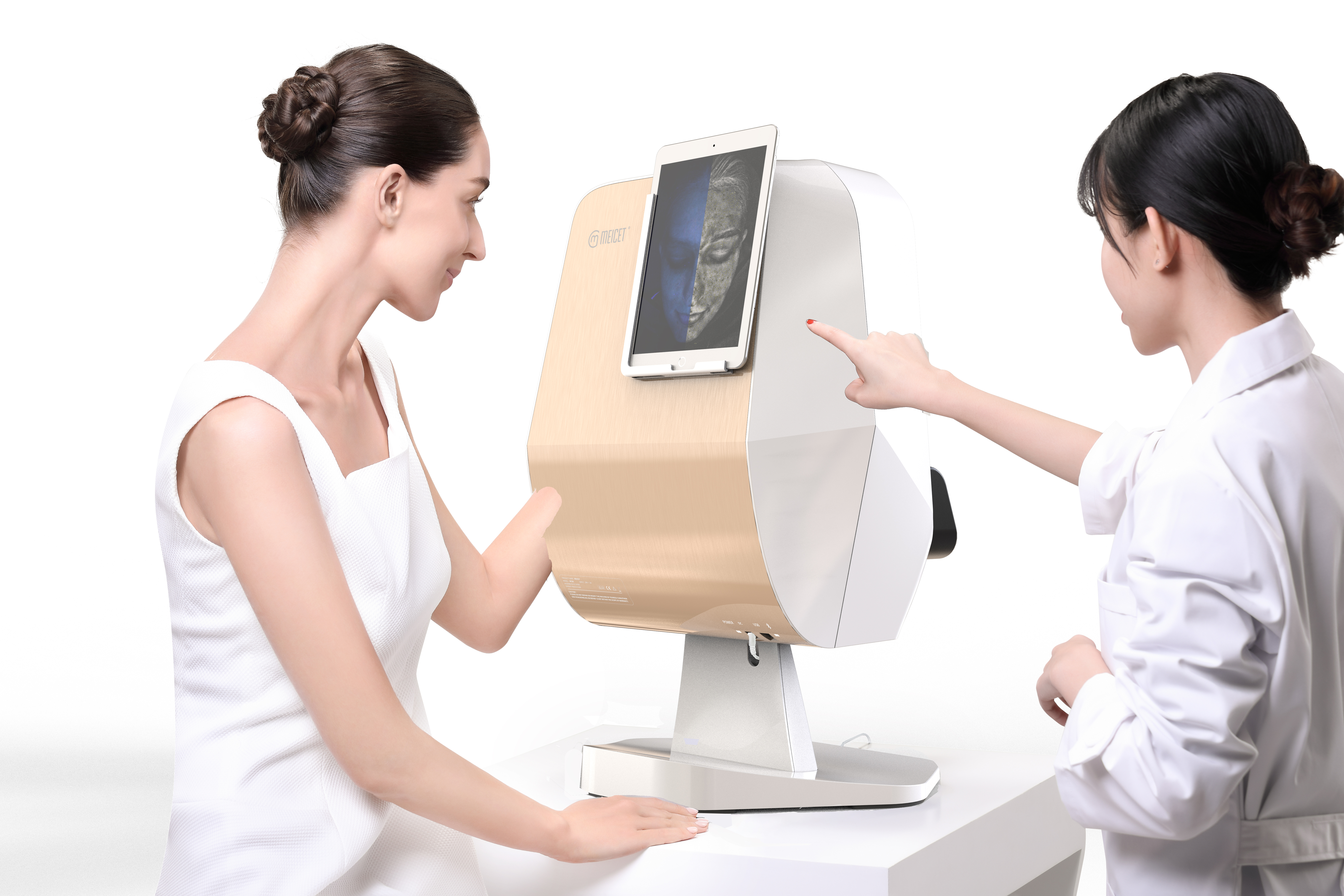 Daylight Mode
Daylight Mode
Simulates the observation of the customer's skin condition under daylight, mainly used for facial intelligent positioning, skin colour analysis and comparison with other analysis charts. After giving the test to the customer, it first starts to analyse from this mode, which is the real condition of the skin surface when the customer himself looks in the mirror, and also what others can see with their naked eyes.
Cross-polarised light pattern
Cross-polarised light helps to see deeper pigmentation problems in the skin and is mainly used for analysing sensitivity and epidermal pigments. The stratum corneum of the skin can be viewed to see the transparency of the skin. Vascular lesions can be seen. In terms of vascular lesions one can see a thin skin stratum corneum, inflammation of the skin, sensitisation caused by dryness or acneic skin (either acne that has grown or is about to break out), all of which can be present.Grafting project:Red blood line project, repair type Hydration and light spot type.
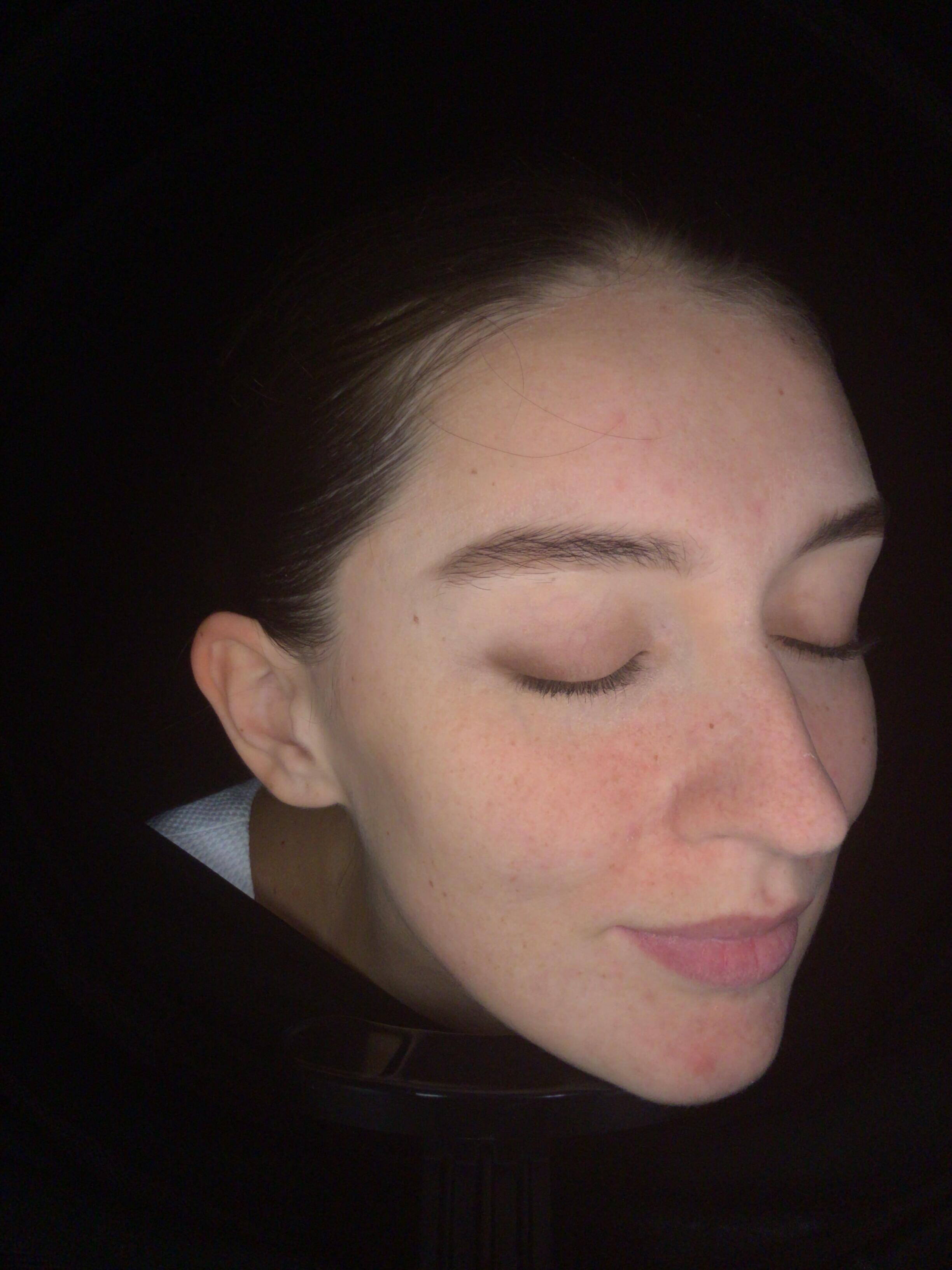
sensitivity
In conjunction with the picture below, the structure of the skin from inside to outside is: stratum corneum, epidermis, dermis.
Most of the melanin is distributed in the epidermis, and the capillaries, i.e. haemoglobin, are distributed in the dermis.
Polarised light irradiation to the skin, the surface of the stratum corneum reflected light due to polarisation is blocked into the camera.
While the polarised light irradiated to the epidermis and dermis, the polarisation has been changed due to the action of light in the epidermis and dermis of the skin, so it can enter the camera through polarisation 2. So the cross-polarised image shows the epidermis and dermis. Parallel polarisation is the opposite, light from the surface of the stratum corneum can pass through, light from the epidermis and dermis can't, so parallel polarisation can only see the stratum corneum, the surface of the skin.
Below is the cross-polarised light pattern, where you can clearly see significant redness in the sensitive area
On the right is a thermogram. A sensitive area is an area with a high haemoglobin content. Normally when an area of the skin is inflamed or otherwise diseased, the haemoglobin content of this area will be elevated, which will manifest itself as a reddening of the skin in that area. The sensitivity thermogram shows the distribution of haemoglobin levels, i.e. the distribution of sensitivity symptoms. In general, the redder it is, the more severe it is. A comparison of the thermograms before and after treatment makes it easy to visualise the effect of the treatment.
Erythropoietin Image
The erythropoietin image is obtained from the right cross-polarised light, which mainly shows the distribution of red pigments in the superficial layers of the skin, allowing you to see the symptoms of capillary dilatation, sensitivity, inflammation, and redness of the skin, with a stronger contrast effect.
、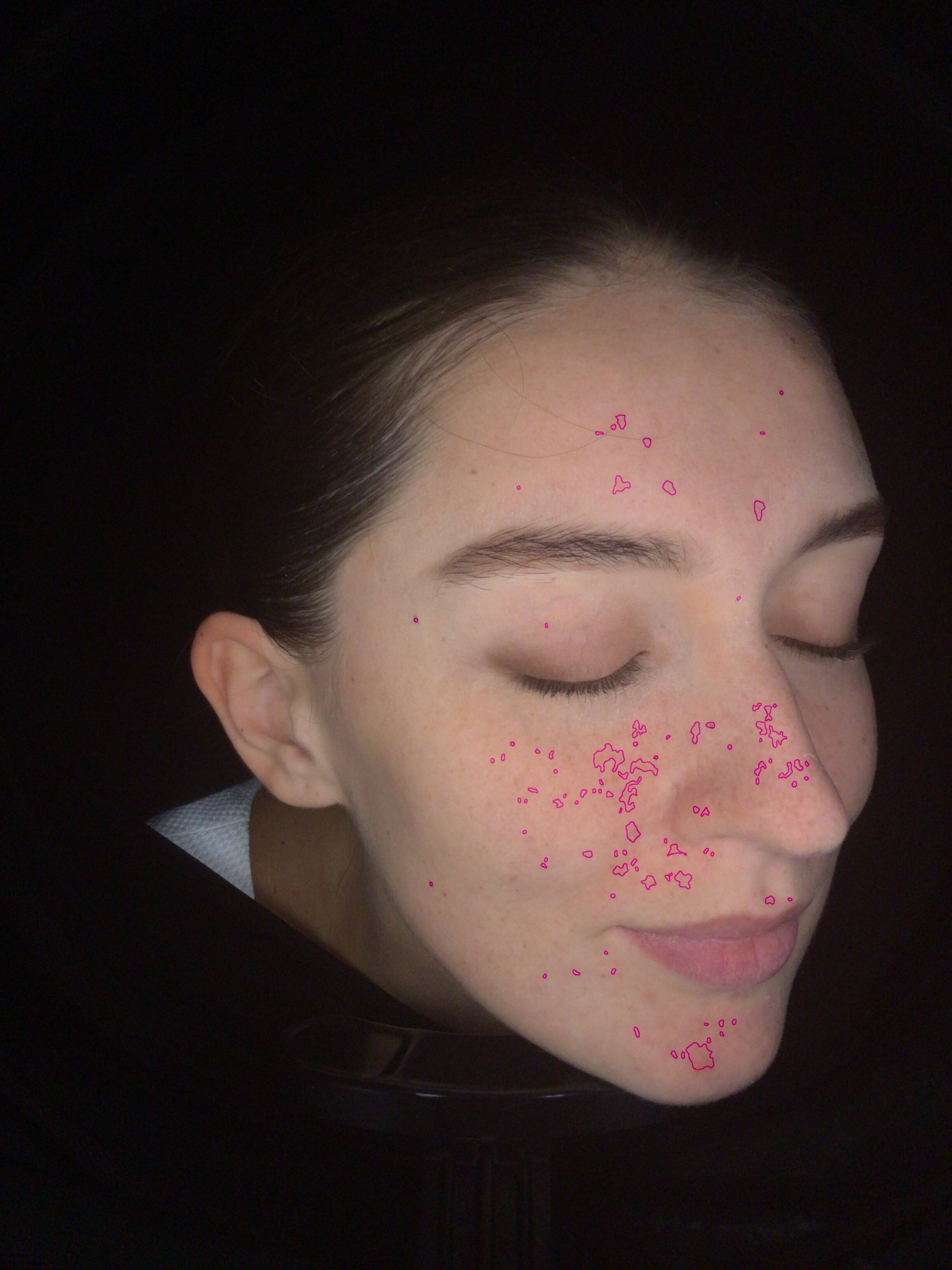
Wrinkles
On the left is the parallel polarisation mode, which helps to see the flatness and texture of the skin surface, and can clearly see the dryness, fineness, lines, and laxity of the skin, and pores on the skin surface, and pimples and pits left by acne can all be observed.On the right is the prediction mode of wrinkles, this mode shows the symptoms that wrinkles will present during 5-7 years if no maintenance is done, which can give customers an early warning.
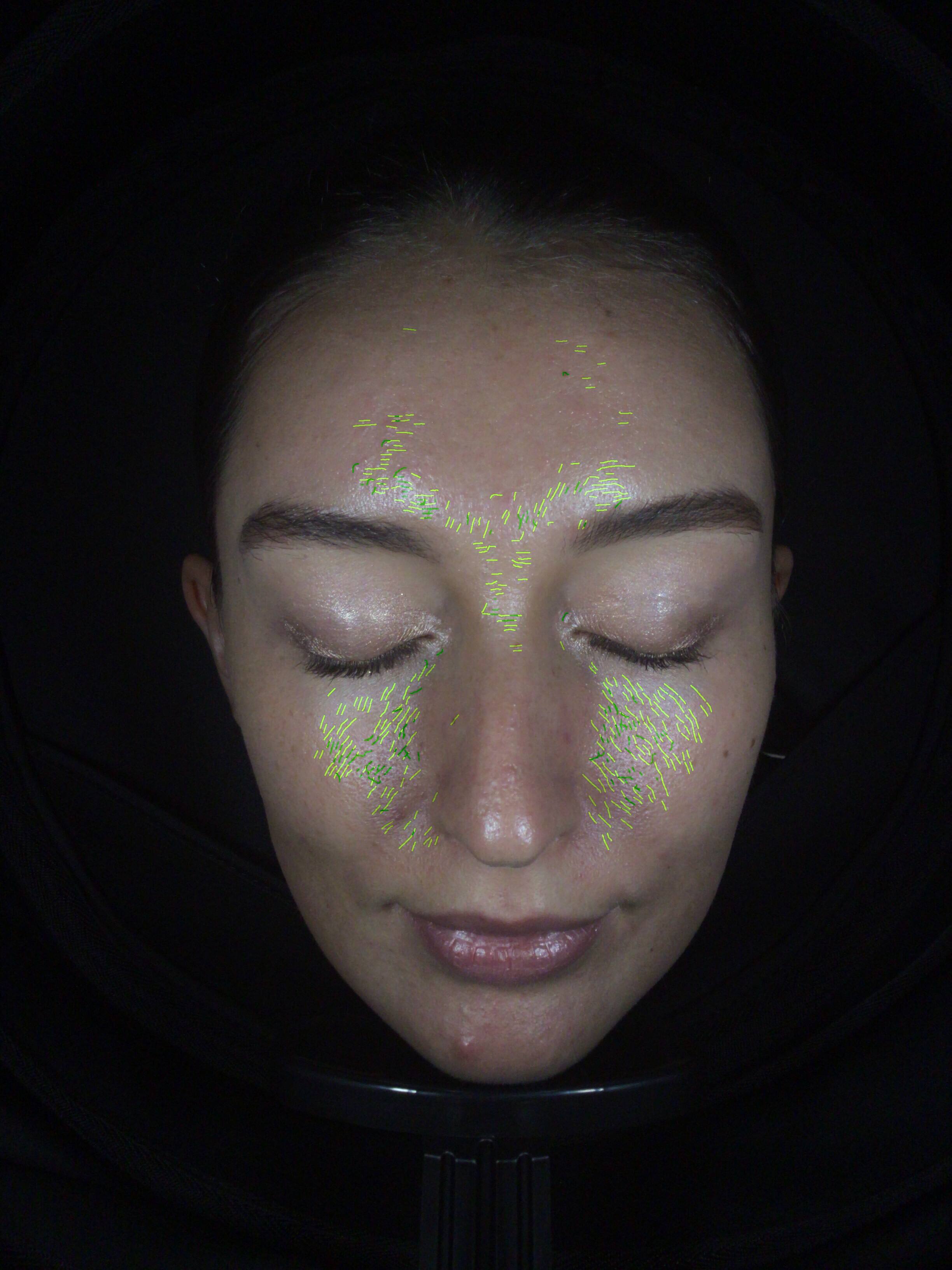
Pores
On the left is the daylight mode, which simulates the state presented by the skin when viewed in daylight. It is used for comparison with pictures taken in other modes.
On the right is a picture obtained by parallel polarised light, which clearly shows the enlarged pores. Pores can also be observed along with acne in UV light mode.
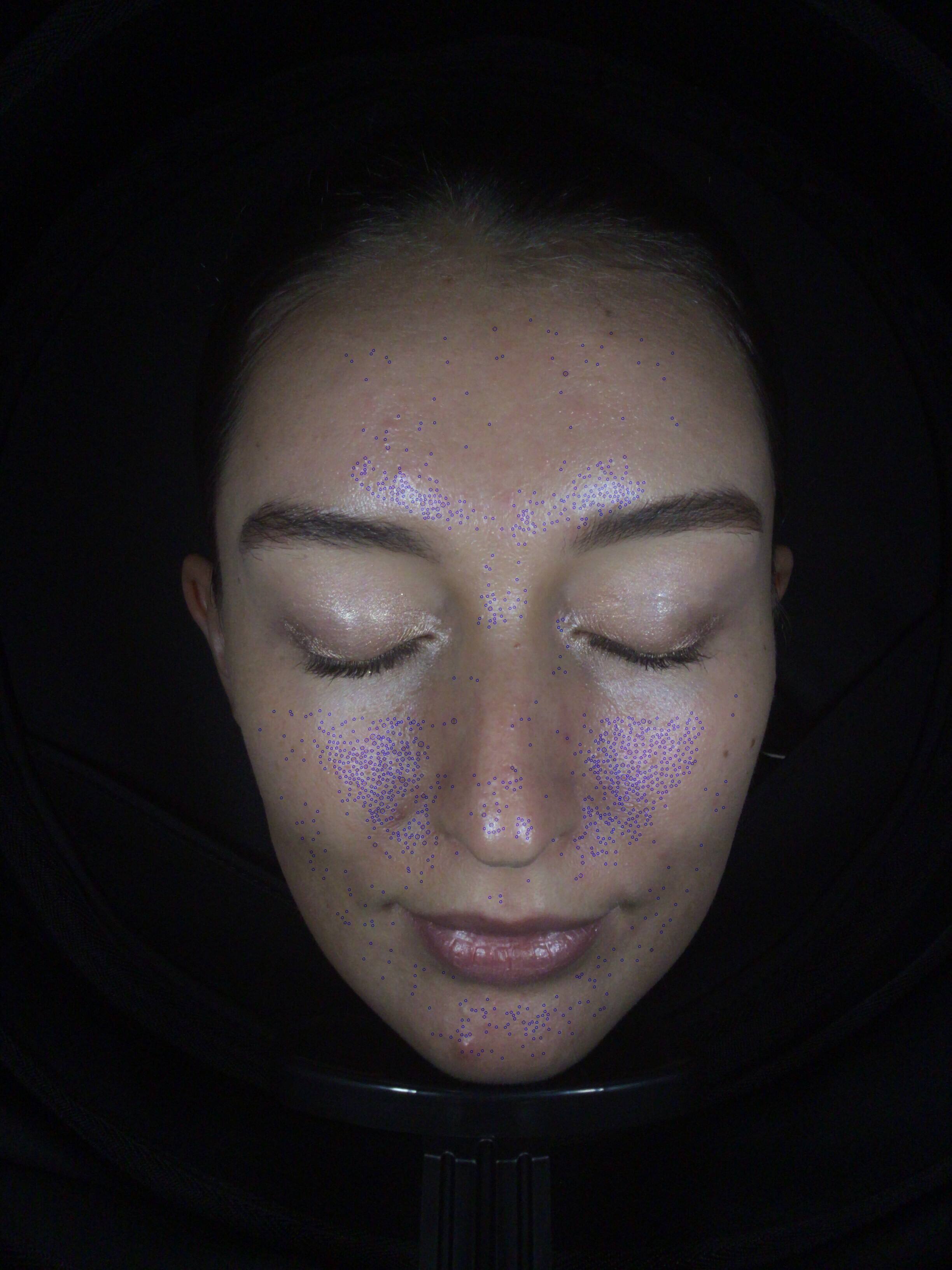
UV Light Mode
UV light can see deeper into the skin and is used to analyse deep spots and acne. It can see all pigmentation problems under the skin, including pitting, again spots, and acne marks. Skin with redness can also have inflammatory discolouration if you haven't squeezed a pimple. You can also see the distribution of oil spots:red spots are acne-causing Propionibacterium; yellow-green spots are free oil; white spots are clogged pores. Can analyse the skin's metabolism, blood circulation is not good, around the mouth, around the eyes are easy to darken. Can detect the skin moisture retention facial whitening indicates that the skin is dehydrated; lips whitening indicates that less water, dry lips; often shave the eyebrows skin will be keratinised, there is a whitening phenomenon.Grafting projects: picosecond, spot removal projects.
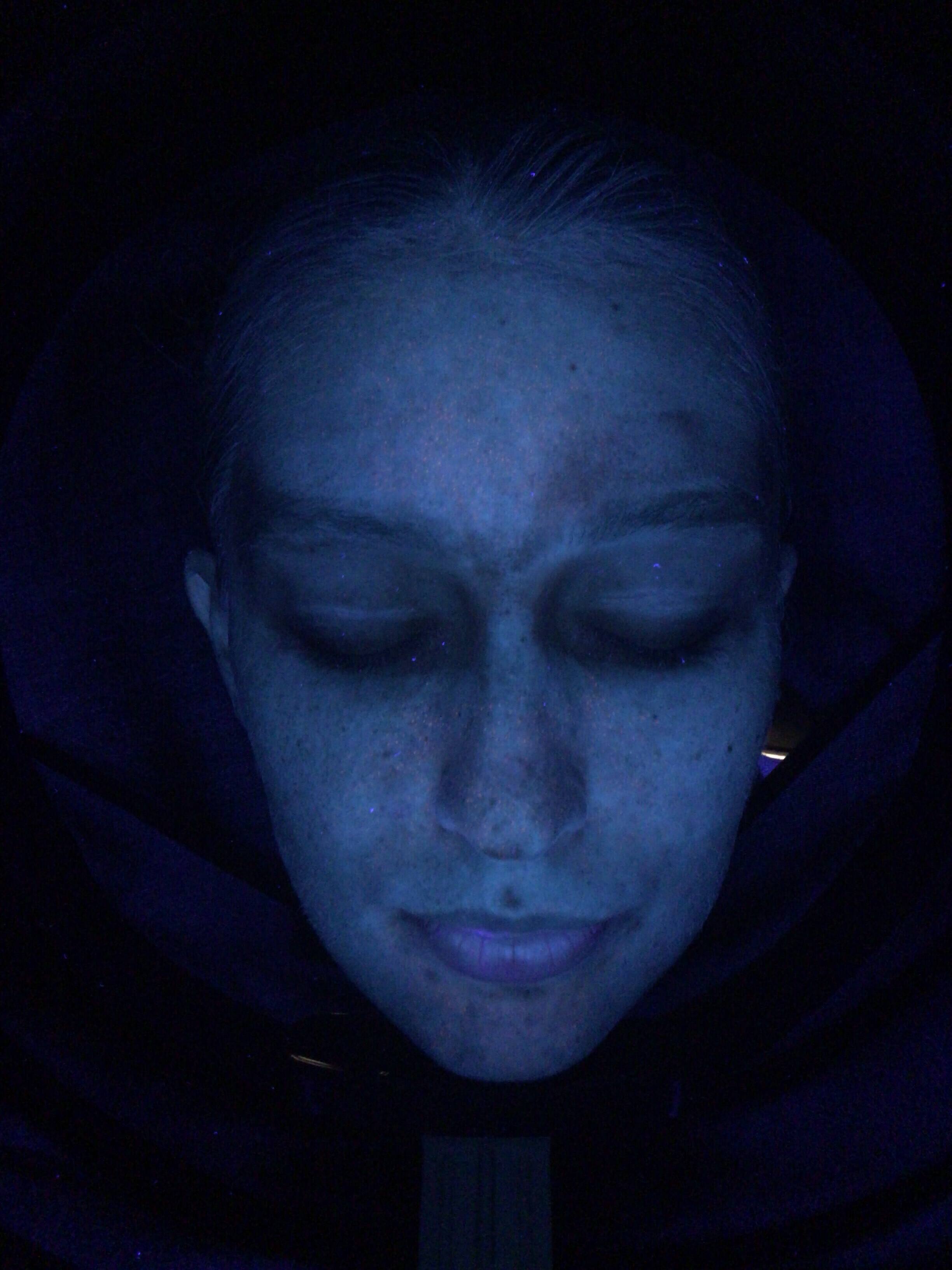
Acne
On the left is a comparison between daylight and UV light for acne and discolouration problems not visible to the naked eye.On the right is a comparison between parallel polarised mode and UV light mode. Pores and acne areas can be viewed in combination. Acne is labelled using blue dots.
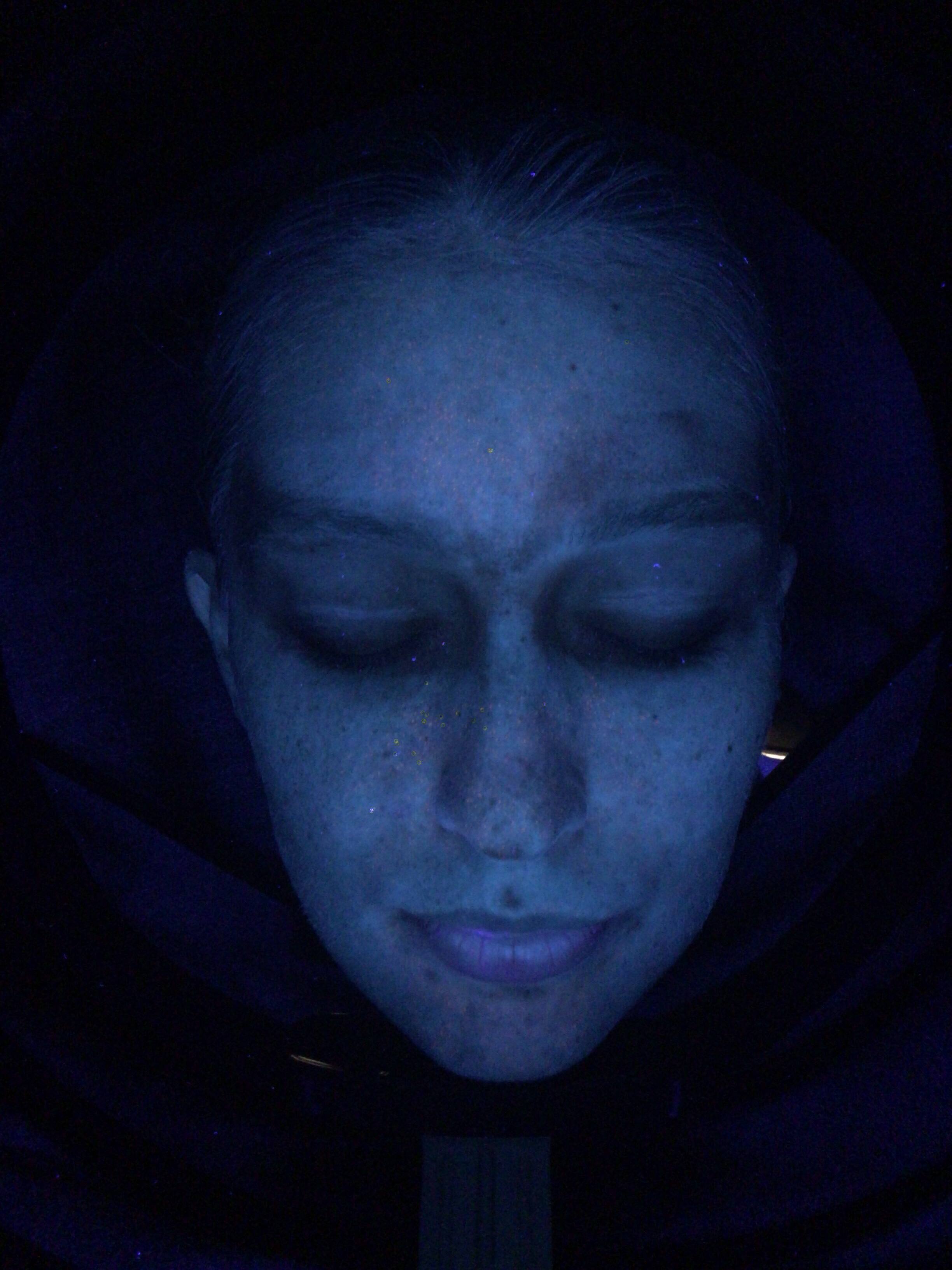
Intensive Pigmentation
On the left is an image taken in UV light mode, which allows you to see deeper into the skin and see all the pigmentation problems under the skin, including dot spots, again spots, and acne marks.On the right is a black and white image that shows the distribution of darker spots more visually by means of image enhancement. It can be used to compare results before and after treatment.
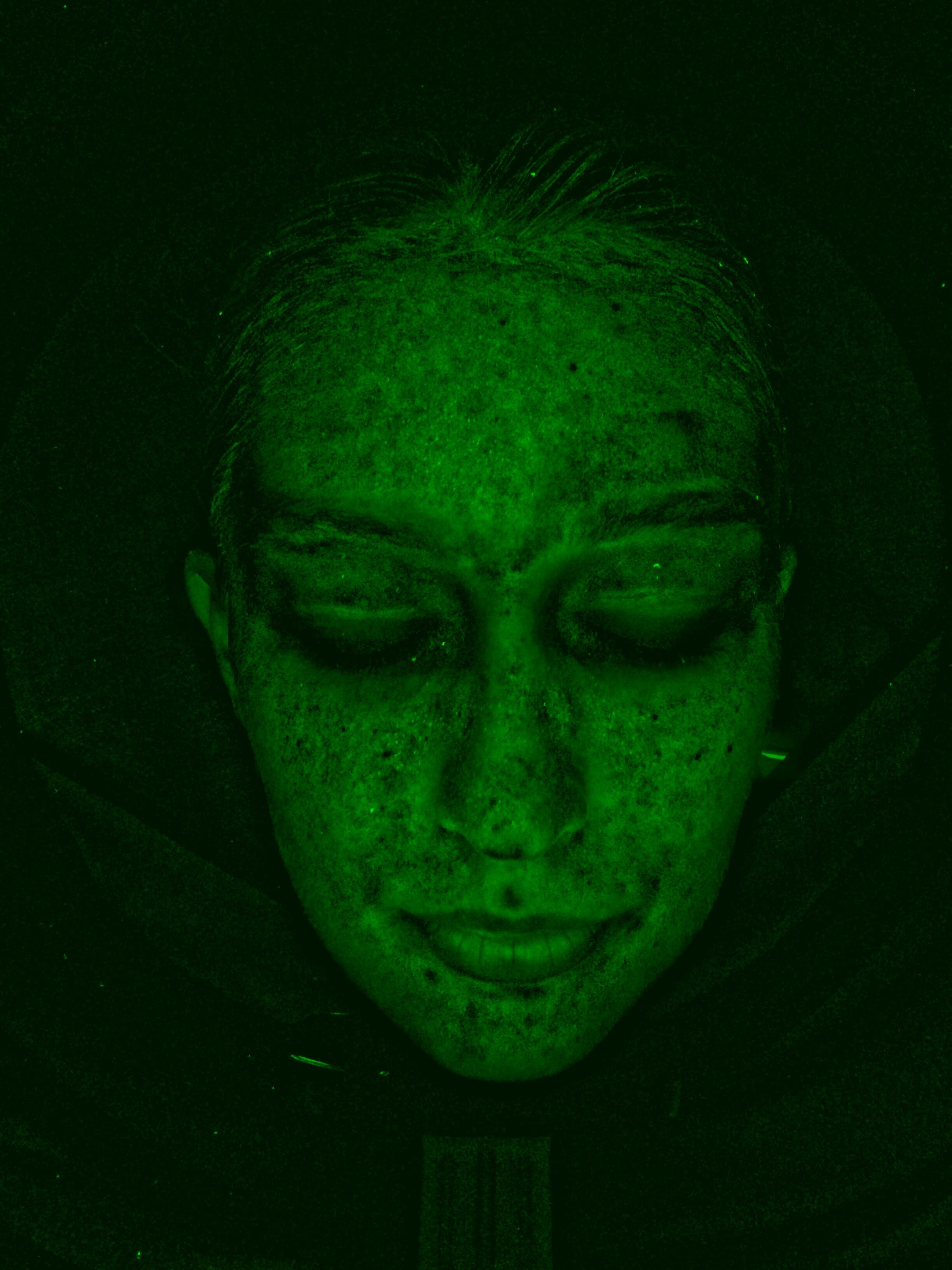
 EN
EN
 AR
AR
 BG
BG
 HR
HR
 CS
CS
 DA
DA
 NL
NL
 FI
FI
 FR
FR
 DE
DE
 EL
EL
 HI
HI
 IT
IT
 JA
JA
 KO
KO
 NO
NO
 PL
PL
 PT
PT
 RO
RO
 RU
RU
 ES
ES
 SV
SV
 TL
TL
 IW
IW
 ID
ID
 SR
SR
 SK
SK
 SL
SL
 UK
UK
 VI
VI
 SQ
SQ
 HU
HU
 TH
TH
 TR
TR
 FA
FA
 AF
AF
 MS
MS
 UR
UR
 BN
BN
 LA
LA

